Here are images for the next issue.


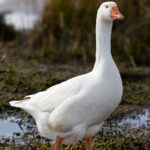



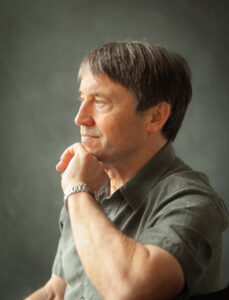

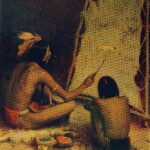

 The Writer's Workshop
The Writer's Workshop

These are vivid word pictures that introduce a character and bring them to life on the page, as Mark Twain does in his stories and books. The character sketch should be short, vivid, succinct. Include distinctive details; try to SHOW rather than simply TELL about someone. Include one tag or crowning detail that the reader will associate with them.
Most writers have little trouble with the ‘telling side’ of characterization. They quickly and easily sum someone up: he is a grump; she’s an entertainer. But writers often have a much harder time of explaining why they formed that opinion of the person. As a result, they don’t know how to demonstrate the truth of that assessment to the reader. Here are some ideas of what to look for in a direct or ‘showing’ approach to character sketches:
SHOWING CHARACTER
–APPEARANCE – What do they look like? What size, color, shape, weight is person? What kind of clothes do they wear? Do they have a narrow face, or a round, cherubic face? Green eyes or brown eyes? Do they wear a smile or a frown?
–MANNER – How do they move, walk, sit? What’s they’re posture like? How do they smoke a cigarette? Vape? Drive a car? Eat an ice cream cone?
–SPEECH – What do they say? How do they say it? Do they have a distinct dialect? How can you use this to characterize them? Is their speech individuated? How can you capture this?
–CHARACTER IN ACTION – How do they behave in their work, social and family life? What do their actions tell us about who they are? This is an especially effective way of characterization. Follow someone around work or at home. Record details of speech, manner, etc. See how they interact with other people.
We’ll discuss character sketches in my spring class, The Nature of Narrative. Let me know if you’d like to sign up!
In organizing a piece, narrative writers tell the story in terms of scenes linked chronologically, creating interest and suspense, pulling the reader forward through the story. Commentary, explanation and description can be added to the scenes or placed around them as long as they don’t detract from the narrative momentum, or profluence, as John Gardner referred to it in The Art of Fiction. Such stories have a beginning, middle and end, although not necessarily in that order. They arise out of a conflict that is resolved by the end of the piece.
Good story ideas for narrative writing meet the following criteria:
1) BASED ON SCENE – Organized around one or more scenes. Unlike a feature story, these pieces should be composed almost entirely of scenes. There can be passages of narrative summary that provide background information, but these should be incorporated into or around the scene.
2) EMPHASIZE CHARACTER – Elucidation of character lies at heart of these stories. They can convey information, but this should be done through the personalities central to the story.
3) ENCOURAGE CURIOSITY – Writers should appeal to readers’ curiosity, pulling them along with suspenseful storytelling, not letting them go until the end.
4) CONFLICT AND RESOLUTION FORMAT – The story has to be organized around a conflict, whether an external one like climbing a mountain, or an internal one of overcoming stuttering. Most of the best stories have a conflict that embraces both the internal and the external. Example: John has to overcome his fear to climb the mountain. Melissa meets a supportive speech therapist who helps her speak normally.
For more on story ideas, consider signing up for my spring writing class, The Nature of Narrative.
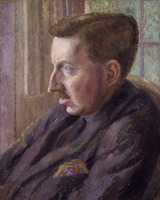
Scenic writing is the basis for some of the most moving, satisfying, sophisticated works of literature. It is especially effective in bringing readers into the story because it helps them create a world, a world that you the writer have inhabited and can share with the reader through words. Scenes present a visual, sensual world the reader can inhabit, a kind of imaginary garden with real toads, whether that’s the world of the astronaut program of Tom Wolfe’s The Right Stuff, the vast landscapes of the Southwest in the work of Terry Tempest Williams, or the hard-bitten, humorous Irish Catholic childhood of memoirist Frank McCourt or the gripping nonfiction books of Pulitzer Prize winner Lawrence Wright, pictured below.
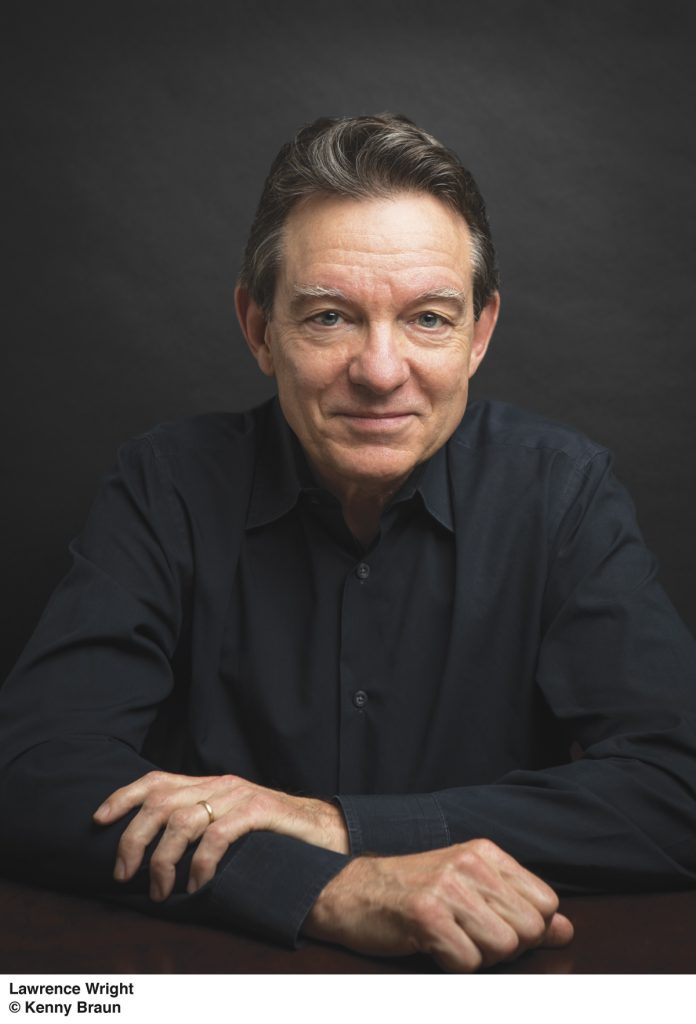
1) SETTING THE SCENE
This transition usually leads to a nut graph, a paragraph that suggests or explains the larger point or goal of the scene and furnishes its larger context. It’s called a nut graph because it puts all of these things together in a nutshell. Who? What? When? Where? And most importantly, why? As in, why should the reader care? What will the scene accomplish?
For more on how to set a scene, please sign up for my winter narrative and Seattle writing class, The Arc of the Story.
Go to the library or bookstores or magazine shop and begin reading publications. Some writers wouldn’t deign to do this, but it makes all the difference. What kinds of places publish profiles of political figures? Should you send your piece about airport security to an airline magazine or a travel magazine? How do you choose which outdoor magazine to contact about a mountain biking story? Reading the publications will help you answer these questions. Magazines and newspapers have distinct personalities, almost like people. Writers need to get to know them and then the questions of where to send a story soon becomes clear.

If you don’t take time to do this, you’ll be wasting time and money. Every newspaper or magazine occupies a certain market niche, serves a particular audience and is looking for a specific kind of story. For example, don’t bother pitching a story on a national political issue to your hometown newspaper unless there is a local angle.
Get to know the publication. Visit the publication’s website for writer’s guidelines; most publications will furnish these free of charge. Then read the magazine thoroughly, look at the ads, the letters to the editor. What kind of audience are they aiming at? Socially conscious? Upwardly mobile? Cigar Aficionado will not want your story on the evils of second-hand smoke but Mother Jones might pick it up.
What’s the style of the magazine? Straight reporting? Satire? Political commentary? Are the stories long or short? Are they mostly staff-written or written by freelancers?
What part of the magazine is easiest to break into? Many magazines include a front section of short profiles, often written by freelancers. Newspapers often publish reviews of books, restaurant s, concerts that are written by freelancers. Scope out the publication to figure out which department you’ll target for your query. We’ll discuss all this in more detail in my fall Narrative Writing Class, Tell Your Story, for The Writer’s Workshop.
Audio books are the fastest growing segment of the publishing industry. They are especially appealing to readers who prefer to multitask such as listening while driving.
“Audio books reached 1.3 billion in 2020,” says Scott Ellis of Scott Ellis Reads, an audio book production company. “Revenue increased 113 percent over 5 years.”
With such impressive numbers, it’s no wonder writers increasingly seek to produce an audio book as an adjunct to their print and electronic books, allowing their manuscript to reach a vast new audience.
How can turn your manuscript into an audio book? Ellis spoke to my summer narrative writing class about how to produce and market an audio book.
He outlined the process, breaking things down into production and distribution. Production includes the process by which you written book is narrated and recorded as an audio book. You can do this yourself or you can hire a company like his to do it for you.
It is most common for authors to perform their audiobook themselves in non-fiction where the audience expects and appreciates hearing the author’s voice. It’s less common in fiction where a trained actor can bring to life the book’s characters with a range of accents.
If you choose to narrate your own audiobook you will need a quiet place to record, equipment and software, time and some technical expertise. The equipment and software you would cost around $250. By far the biggest investment will be in the times it takes you to narrate your book and the time it takes you to edit your audio files in post-production.
Estimate, some 9,400 words per hour for a professional narrator. Thus, a 70,000-word novel will result ion a 7.5 hour audiobook. Budget about triple that amount of hours for retakes and editing.
It is most common for authors to perform their audiobook themselves in non-fiction where the audience expects to hear the author’s voice. It’s less common in fiction where the range of characters and accents, or dialects can become overwhelming and may be better suited for a professionally trained voice actor.
If you’d like to have a professional narrator for your book, you can go to Amazon’s ACX service to find one. Many ACX actors are members of the SAG-AFTRA union, and as members, they can accept no less than $250 per finished hour for audiobook projects. Other professional narrators may charge more or less, depending on their experience.
Companies like Scott Ellis Reads also have a roster of professional narrators who can not only record your book but help with the production process. For more: https://www.scottellisreads.com/.
Mike Medberry, author of Living in a Broken West: Essays, talked to my spring narrative writing class for The Writer’s Workshop about how to self publish a book. All those interested in deciding if and how to self publish their book will benefit from this talk. I’ve include the summary of it below.
By Mike Medberry
Henry David Thoreau who self-published the American classic, Walden, wrote that if you have built castles in the air, all of that work need not be lost as that is where your castles should be. He added, “Now put foundations under them!” You’ve written an interesting book at with extreme effort, and you’d like to sell it, so put a foundation under it! Do some research, take a critical look at your own writing, and a define how much self-publishing will cost and yield. The following are a few of the things that you might want to consider:
1) Define what you expect in publishing your own book. Is it for your friends or colleagues or do you think that your book serves a much broader audience? Your next steps will depend on that decision. Keep in mind that about 800 million books are published every year in the US, half of them self-published, and they sell only a handful of copies. Average book sales per year (standard publishers and self-published) are 200 copies and less than 1,000 copies in that book’s lifetime. Can you do better?
2) Build a foundation for your work: create a good website for $500 – 2500, develop high numbers of supporters on your defined social media networks like Facebook or Twitter, write supportive blogs on the web or articles in hard copy magazines or newspapers. This is all so basic but people often fail to accomplish it because it is hard, consistent, long term work.
3) Have your manuscript edited and understand what editing means. Good editors are expensive at $20 to $100/hour, but they are indispensable. There are essentially five kinds of editing: a) Developmental Editing which looks at the basic content of the manuscript; b) Structural Editing which looks at the logical flow of the manuscript, style, tone, and overall quality of your writing; c) Copy Editing which assesses the tone, reads for clear and consistent style, asks who is your audience, and looks at word choices and grammar; d) Line Editors should go through your writing line-by-line to look closely at the impact of your writing, word choices, and add polish that will allow your writing to be clear and eloquent; e) Finish Editing is the last stage of writing which focuses on raking up all of the missed minor errors like capitalizations, misspellings, word choice–things like using “there” when you meant to use “they’re” or “their.” All of this is pretty painful, but get used to that pain.
4) Design your book! I know, I know: it was news to me that I had to think about a million arcane details to make my manuscript look like a classy book. But, of course, I wanted my book to look like one of the very best! This should be a fun process, but you can get bogged down in accomplishing the many details to the point of its becoming numbing. I could always hire a consultant to iron out the particulars, but I would learn nothing. I found it very fascinating to learn. I suggest that you hire a good designer at roughly $2,000 to $5,000, retain many of the critical details, and work closely with her. Learn what she is doing for you. It is a lot! I will simply list the items: Define your book cover. Approve of the text, graphics, Table of Contents, and chapters. Place photos and write the captions. Create a publication page: define the International Standard Book Numbers or ISBNS, barcodes (which set the price of your book), QR codes all of which are available through the mystical company Bowker, which, it turns out, you must use. The publication page also includes acknowledgements, the author, credits, and defines the critical subjects that bookstores depend upon to create a shelf your book fits into, like adventure, memoir, or outdoor recreation. Inside the back cover includes your vita, photo of yourself, and defines your other publications. The outside of the back cover includes your picture, a great summary of your book, great quotes from recognized authors supporting your book, the logo for your publisher, the QR code, and the barcode. That is all you need… But the bookstores will know exactly what is needed!
5) Print the book and publish your book. Nowadays, it is much simpler, much cheaper, and more effective to print books than it was ten years ago because of self-publishing software and Print on Demand services. It is your decision to have your book printed in exactly the way that you’ve imagined and there is no stigma about publishing your own book, as there was in the past. Using color or distributing photos across the book or making editorial opinions are decisions that can be made by you and are now relatively cheap.
6) Find Target Audience – I think that self-publishers, you or me, can effectively aim at smaller audiences than standard publishers can and still make money; that is strictly a matter of your expenses and theirs, in which you are able to saturate your target at a more local place and at a reasonable price.
7) Choose publishing platform – Publishers include Amazon’s Kindle Direct Publishing and IngramSpark among many others, but in my world those two are absolutely key to consider. If your manuscript is in good shape, there will be no problem publishing your book with either or both publishers. If the manuscript is in bad shape, well, good luck… Read the contracts carefully or your book may be pulled from publication if you don’t follow their guidelines. You will come to understand that: Profit with Ingram = book price – 30% – printing price And that will set the price you can choose.
8) KDP vs Ingram – There are significant differences between KDP and Ingram, however. All independent bookstores will reject KDP books (or will offer you a consignment plan) and will favor Ingram because Ingram will guarantee that bookstores can return any book. That will cost you money, but you will have many more places to sell (all of the indie bookstores!) if you’re using Ingram. With the e-books the circumstances will reverse, however. It is a yin-yang relationship with publishers; you need both, and you must read that annoying contract very, very carefully with any publisher.
9) Distribute and sell your book. Your foundation and all the work you’ve done to publicize your book will come into play when you go to distribute and sell your book. With an action plan that extends one-year from the publication date you would be able to rack what is happening with your book and will help you plan readings. Keep good track of your book sales for tax purposes. This is particularly important when a store offers you a consignment plan, which will be hard to collect-on without good records.
10) Road to Success – Now, as if all of that wasn’t enough to think about, I’d say that you are on the road to a most extravagant and interesting success! And all of us should cheer for every other writer who treads upon this path.
Living in the Broken West: Essays:

Travel writing is one of the most satisfying and diverting kinds of writing. It calls on all of the skills of a creation nonfiction writer—dramatic scenes, character sketches, concrete detail, point of view, scene by scene construction. It’s very difficult to do well, but here are 10 tips for succeeding at it.
Rich Read wanted to tell a story. He’d visited southeast Asia and saw an immense economic crisis unfolding. But how to make that interesting to a general reader of the Oregonian where he worked as a reporter?
“I didn’t want to write an economic treatise because no one would read it,” he said when he spoke to my fall writing class for The Writer’s Workshop. “I wanted to find a product from the Northwest, sold to the middle class, and follow it. I started casting around and came up with idea of French fry which is a multi-billion dollar industry. The russet Burbank potato is perfect for fast food French fries. It was a crazy idea for a regional newspaper.”
The proposal was denied, so he retooled it and sent it again. Denied. Then managing editor Therese Bottomly got wind of it. “I love this story,” she said. “We’ve got to do it.”
Rich was assigned to work with editor Jack Hart, a specialist in narrative writing, and author of Storycraft which I use in my writing courses for The Writer’s Workshop.
“What are you trying to do?” Jack said.
“I want to follow the river of French fries,” Rich explained.
“You want one container to give it drama and specificity,” Jack said. “You need to find one container and follow it around the world.”
Rich took Jack’s advice, found such a container, and wrote a terrific story about French Fries and the global supply chain.
“Writing is always harder than the reporting,” he said. “This was my first try at narrative writing. Jack Hart walked me through how to do it. We chose John McPhee as a model because he’s such a great explanatory writer. Each scene would have a point.”
It ended up being a multipart series and got a great reaction. When Rich returned to the office, there was a bouquet of flowers on the desk and a note, “You’re a finalist for the Pulitzer.”
On day of the awards, the editorial staff gathered in the newsroom to hear he’d won it. “They wheeled in crates of MacDonald’s French fries and champagne,” he says. “It was really great for the paper.”
Read the story here: https://www.pulitzer.org/winners/richard-read.
Richard Read is a freelance reporter based in Seattle, where he was a national reporter and bureau chief for the Los Angeles Times from 2019 to 2021. A two-time Pulitzer Prize winner, he was a senior writer and foreign correspondent for The Oregonian, working for the Portland, Oregon newspaper from 1981 to 1986 and 1989 until 2016.












